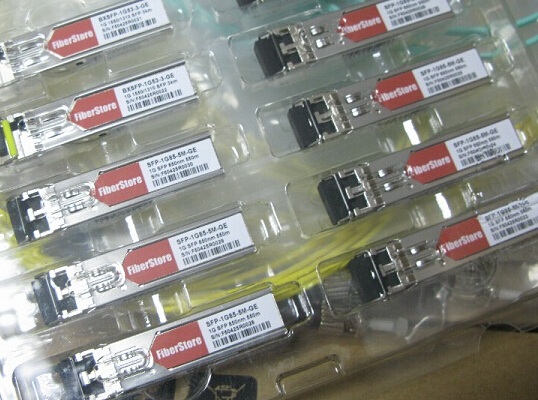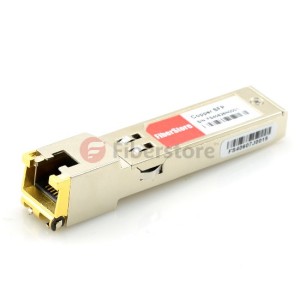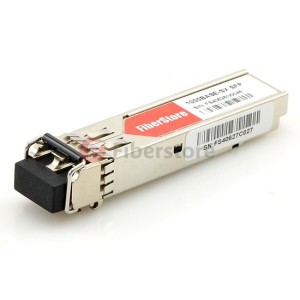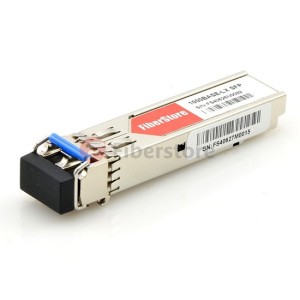Fiber Optics Solutions
ponedjeljak, 18.05.2015.
SFP Transceiver Signals and Types
Small form-factor pluggable transceiver - Signals
The SFP transceiver holds a Printed track Board that partners with the SFP electronic connector in the service configuration.
Base Transceiver Station
A "base transceiver station" (BTS) is a bit of outfits that eases wireless information exchange amid exploiter out fits (UE) and a network. UEs are implements like protable telephones (handsets), Wireless native loop telephones, computers with wireless Internet connectivity.
The network may be that of whatever of the wireless information exchange applications of tools and methods like GSM, CDMA, wireless native circle, WIFI, WiMAX either different ample zone network (WAN) technics.
BTS is as well referenced to like the broadcast center facility (RBS), point B(in 3G Networks) either, plainly, the center facility (BS). For conversation of the 3GPP Long TERM Evolution normal the shortening EnodeB for developed point B is extensively applied.
Though the expression BTS may be appropriate to whatever of the wireless information exchange norms, it is normally related with portable information exchange applications of tools and methods like GSM and CDMA. In this heed, a BTS forms piece of the center facility self-contained system within larger system (BSS) elaborations for configuration administration. It might as well have outfits for encrypting and decrypting information exchanges, range filtrating implements (band go filters), etcetera. Antenas might as well be deemed like parts of BTS in common feel as they some dissimilar turnaround and dissimilar areas of the cell (in the situation of sectorised center stations). A BTS is managed by a progenitor center facility regulator by way of the center facility command purpose (BCF). The BCF is executed like a separate component either even integrated in a TRX in firm center stations. The BCF delivers a transactions and upkeep (OM) link to the network administration configuration (NMS), and organizes operative states of every one TRX, as well like code managing and alert gathering. The fundamental construction and purposes of the BTS stays the similar notwithstanding of the wireless technologies.
RF module - Transceiver modules
An RF Transceiver component includes either a sender and recipient. The track is characteristically developed aimed at Half-duplex working, though Full twofold components are accessible, characteristically at a developed outlay expected to the appended difficulty.
Small form-factor pluggable transceiver - Types
SFP transmitters and receivers are accessible with a diversity of sender recipient kinds, permitting consumers to choose the suitable transceiver for every one link to supply the needed ocular get to over the accessible ocular fiber sort (e.g. Multi-mode fiber either single-mode fiber). Optical SFP components are normally accessible in some dissimilar categories:
For multi-mode fiber, with black either ecru removal lever
SX - 850nm, for a greatest of 550m at 1.25Gbit/s (Gigabit Ethernet) either 150m at 4.25Gbit/s (Fibre Channel). Related product: 1000BASE SX SFP.

For single-mode fiber, with azure removal lever
- LX - 1310nm, for spaces up to 10km (e.g. Cisco GLC-LX-SM-RGD).
- EX - 1310nm, for spaces up to 40km.
- ZX - 1550nm, for spaces up to 80km.
- EZX - 1550nm, for spaces up to 120km.
- BX - 1490nm/1310nm, Single Fiber Bi-Directional Gigabit SFP Transceivers, matched as "BS-U" and "BS-D" for Uplink and Downlink correspondingly, as well for spaces up to 10km. Variations of bidirectional SFPs are as well produced that employ 1550nm in one management.
- 1550nm 40km (XD), 80km (ZX), 120km (EX either EZX)
- SFSW - Single Fiber Single Wavelength transmitters and receivers, for bi-directional SFPs are a sole fiber. Coupled with CWDM, those duple the flow thickness of fiber ties.
- CWDM and DWDM transmitters and receivers at different wavelengths attaining different greatest distances.
For cuprum twisted couple cabling
1000BASE-T (e.g. GLC-T 1000BASE-T SFP) - those components integrate important circuitry and may solely be applied aimed at Gigabit Ethernet, as that is the user interface they use. They are not harmonious with (or rather: do not have coequals for) Fibre delivery method either SONET.
More related articles about SFP transceiver modules: Optical Transceivers Wiki
Oznake: SFP Transceiver, 1000base-t sfp, GLC-T
ponedjeljak, 20.04.2015.
D-Link 1000BASE SFP Module Introduction
D-Link Introduction
As the leading brands of networking equipment maker, D-link devoted itself to develop, manufacture and sale Local Area Network (LAN), broadband network, wireless network and voice network products for the digital home, Small Office/Home Office (SOHO), Small to Medium Business (SMB) and Work-group in the worldwide. Energy conservation and environmental protection are always the primary goal for D-link. There are many fiber products from D-link. Today, I will introduce an essential part of the switches product line—the D-Link SFP transceiver modules.
About D-Link's SFP Modules
D-Link's new line of GBIC and SFP transceivers represent an industry leading combination of performance and affordability. D-Link's new Gigabit transceivers are available in two form-factors: standard (GBIC) or (SFP) /mini-GBIC. SFP modules can be used and interchanged on a wide variety of switches and routers. And SFP modules also can be intermixed in combinations of 1000BASE-T, 1000BASE-SX, 1000BASE-LX/LH, 1000BASE-EX, 1000BASE-ZX, or 1000BASE-BX10-D/U on a port-by-port basis.
D-Link 1000BASE-T SFP
The D-Link DGS-712 1000BASE-T is based on the SFP Multi Source Agreement (MSA). It is compatible with the Gigabit Ethernet and 1000BASE-T standards as specified in IEEE 802.3z and 802.3ab. The DGS-712 plugs into any standard SFP interface and allows for 1000Base-T Gigabit transmission over standard Category 5 twisted pair copper.
Key Features
- Product Type: SFP transceiver module
- Data Rate: 1Gbps
- Wavelength: N/A
- Transfer Distance: 100m
- Connector Type: RJ45
- Cable Type: Copper
D-Link 1000BASE-SX SFP
D-Link DEM-311GT 1000BASE-SX SFP 850nm transceiver module supporting dual data-rate of 1.25Gbps/1.0625Gbps and 550km transmission distance with Multi-mode Fiber (MMF). It was designed to meet Gigabit Ethernet and 1 times Fibre Channel application networking. It fully comply with the SFP Multi-Sourcing Agreement to meet the network upgrade needs.
Key Features
- Product Type: SFP transceiver module
- Data Rate: 1Gbps
- Wavelength: 850nm
- Transfer Distance: 550m
- Connector Type: LC Duplex
- Cable Type: Multi-Mode Fiber (MMF)
D-Link 1000BASE-LX SFP
D-Link DEM-310GT is the 1000BASE-LX LC SFP 1310nm transceiver module. It supports dual data-rate of 1.25Gbps/1.0625Gbps and 10km transmission distance with Single-mode Fiber (SMF). With a metal housing, it can effectively reduce Electro-Magnetic Interference (EMI) and increase durability.
Key Features
- Product Type: SFP transceiver module
- Data Rate: 1Gbps
- Wavelength: 1310nm
- Transfer Distance: 10km
- Connector Type: LC Duplex
- Cable Type: Single-Mode Fiber (SMF)
D-Link’s SFP Module Alternative Solution
Fiberstore offers third party optical transceivers. All the D-Link SFP transceiver is certified 100% compatible with D-Link switch and router product lines. Fiberstore provides D-Link DGS-712, D-Link DEM-311GT, DEM-310GT Compatible D-Link 1000BASE SFP interface. All the SFP transceiver modules are 100% tested before shipping and have a lifetime warranty.
Article Source: D-Link’s SFP Module Alternative Solution
Oznake: Cisco SFP, GLC-T, GLC-LH-SM, GLC-ZX-SM
subota, 28.02.2015.
Fake SFP and the Third Party SFP
It appears to be an old topic that whether using compatible SFP transceiver is reliable. We have previously discussed this topic couple of days ago. For certain, the reply is affirmative. In this paper we discuss Faked SFP and the Third Party SFP. As examples, there are Cisco SFP module and Brocade SFP module.

It Is A Faked SFP?
Like a break pad an SFP is somewhat a consumable. Light is converted into an electric signal and vice versa, produces heat and the components wear out over time. Some sooner, some later. When you bought the SFPs from Cisco for a switch under Cisco warranty or maintenance, broken SFPs will be substituted for free. However, if you simply decide to purchase an SFP, you will find after having a quick web search that there are lots of supplier out there providing the same SFP for a much cheaper price than Cisco. And with "the same SFP" I mean they provide exactly the same Cisco part number - for example Cisco GLC-SX-MM. That's an 1000BASE-SX SFP 850nm 550m transceiver.
Really The Same SFP?
Absolutely not - even though they claim it to be the same. Their usual explanation is, that all these SFPs are coming from the same manufacturer anyway. SFPs are built using open standards based on T11 and for that reason they must be compatible per se. I can tell from several occasions: That's not true. There is obviously more than one SFP manufacturer and I'm sure each of you know a handful offhand. In addition: Even in times before 8G there were SFPs working much better with certain switches than others.
Utilizing the 8G platform Brocade decided to offer Brocade branded SFPs and restricted their switches to only support them and to refuse others (beside of very few exceptions for CWDM SFPs). So Brocade took control over which SFPs can be used and they were able to fine tune their ASICs to allow better signal handling and transmission. To enforce that the switch checks the vendor information from the SFP to determine if it's a Brocade branded one. Cisco does the same thing for the SFPs in their switches.
Faked SFP vs Third Party SFP
First, we must realize that Third Party SFP isn't faked SFP. If you are seeking further savings on your own network, consider Third Party SFP. When you purchase from a vendor with their own in-house shop, and guaranteed warranty, you get a purchase that's as reliable as new, at a fraction of the original costs. In my opinion, if you have enough budget, It is best to buy the original one. It doesn’t mean that the compatible one is as not good as the original one but you could save more time in thinking about this question. If you care about the cost, compatible one is the best choice, I suggest you choose the OEM manufacturers.
OEM manufacturers Recommendation
Fiberstore is a OEM manufacturer that provide customized solutions for fiber optics needs, As a Cisco OEM SFP transceiver provider, they offer a series of Cisco comaptible SFP modules which can be equivalent to Cisco GLC-T, Cisco GLC-SX-MM, Cisco GLC-LH-SM, Cisco GLC-ZX-SM, and Cisco CWDM SFP, Cisco DWDM SFP, etc. All their SFP transceivers are 100% compatible with major brands as follows and backed by a lifetime warranty.
Oznake: Third Party SFP, Faked SFP, Cisco SFP, GLC-T
petak, 13.02.2015.
What is the difference between GLC-T and SFP-GE-T?
What is the difference between SFP-GE-T and GLC-T? I have some information from Cisco Support Forums:
- GLC-T, 1000BASE-T SFP transceiver module for Category 5 copper wire, RJ-45 connector.
- SFP-GE-T, 1000BASE-T SFP transceiver module for Category 5 copper wire, extended operating temperature range, RJ-45 connector

GLC-T 1000BASE-T SFP, which is a fiber optic transceiver module via Category 5 copper lines, Cisco GLC-T fiber transceivers provide 1Gbps data transfer and it provides full-duplex Gigabit Ethernet connectivity to high-end workstations and between wiring closets over existing copper network infrastructure. GLC-T SFP is compliant to IEEE 802.3 and its dimension is 0.6 in x 2.8 in x 0.6 in. GLC-T is with plug in module type Mini-GBIC.
3rd-party GLC-T Key Features
- Support 1000BASE-T Operation in Host Systems
- For 100m reach over Cat 5 UTP Cable
- Hot-Pluggable SFP Footprint
- Support RX_LOS as Link indication function
- Fully metallic enclosure for low EMI
- Low power dissipation (1.05 W typical)
- Compact RJ-45 connector assembly
- Compliant with SFP MSA and IEEE Std 802.3-2002
- Detailed product information in EEPROM
- Commercial temperature range (COM): 0 to 70°C
Cisco SFP-GE-T works with 1000BASE-T. SFP-GE-T is with extended working temperature and it is with DOM support. SFP-GE-T is small form transceiver with RJ45 connector interface and it is with spring latch for high density applications.
3rd-party SFP-GE-T Key Features
- Support 1000BASE-T Operation in Host Systems
- For 100m reach over Cat 5 UTP Cable
- Hot-Pluggable SFP Footprint
- Support RX_LOS as Link indication function
- Fully metallic enclosure for low EMI
- Low power dissipation (1.05 W typical)
- Compact RJ-45 connector assembly
- Compliant with SFP MSA and IEEE Std 802.3-2002
- Detailed product information in EEPROM
- Commercial temperature range (COM):0 to 70°C
The third-party GLC-T and SFP-GE-T have the same Key Features. So no difference between them? I think that they are operationally identical and can be interchanged with no problems - the only difference is that the SFP-GE-T conforms to NEBS Level 3 and the GLC-T doesn't. And Then question is what is NEBS Level 3? I'll also add that the SFP-GE-T is a little bit more expensive...maybe $40 more (retail) but it works in switches or routers like the ASR while the GLC-T is for switches only.
What is NEBS and why is it important?
Long a requirement for equipment used in the Central Office in the North American Public Switched Network, the rigorous Network Equipment Building System (NEBS) criteria have become a universal measure of network product excellence. The NEBS compliance of GDC's products is a key advantage for access providers including Local Exchange Carriers (LECs), Competitive Access Providers (CAPs), Competitive Local Exchange Carriers (CLECs), Internet Service Providers (ISPs), and Access Service Providers (ASPs). Products that are NEBS certified are also expected to be top performers in enterprise net- work environments as well.
What does NEBS Level 3 Certified mean?
NEBS has three levels, Level 1, Level 2, and Level 3. Level 1 refers to cases where minimum compatibility with the environment is needed. Level 2 applies for limited operability of the product.
Finally, NEBS Level 3 certification guarantees the maximum operability of the equipment. It also certifies that the equipment will perform well in harsh environmental conditions and will not interfere with other electronic devices around. NEBS Level 3 certified networking equipment is vital in mission-critical applications. More information about NEBS please Google it.
In a word, GLC-T with 1000BASE-T standard, SFP-GE-T with 1000BASE-T NEBS 3 ESD. But, for a 3rd-party SFP module, I still don't know what the difference between them.
| < | srpanj, 2015 | |||||
| P | U | S | Č | P | S | N |
| 1 | 2 | 3 | 4 | 5 | ||
| 6 | 7 | 8 | 9 | 10 | 11 | 12 |
| 13 | 14 | 15 | 16 | 17 | 18 | 19 |
| 20 | 21 | 22 | 23 | 24 | 25 | 26 |
| 27 | 28 | 29 | 30 | 31 | ||
Srpanj 2015 (1)
Lipanj 2015 (4)
Svibanj 2015 (3)
Travanj 2015 (13)
Ožujak 2015 (10)
Veljača 2015 (8)
Siječanj 2015 (9)
Prosinac 2014 (4)
Dnevnik.hr
Gol.hr
Zadovoljna.hr
Novaplus.hr
NovaTV.hr
DomaTV.hr
Mojamini.tv
About Me
Ima Blogger, Just Share Various Fiber Optic Telecom Network Topics, Information, News, Questions, Sources and Network Solutions.
